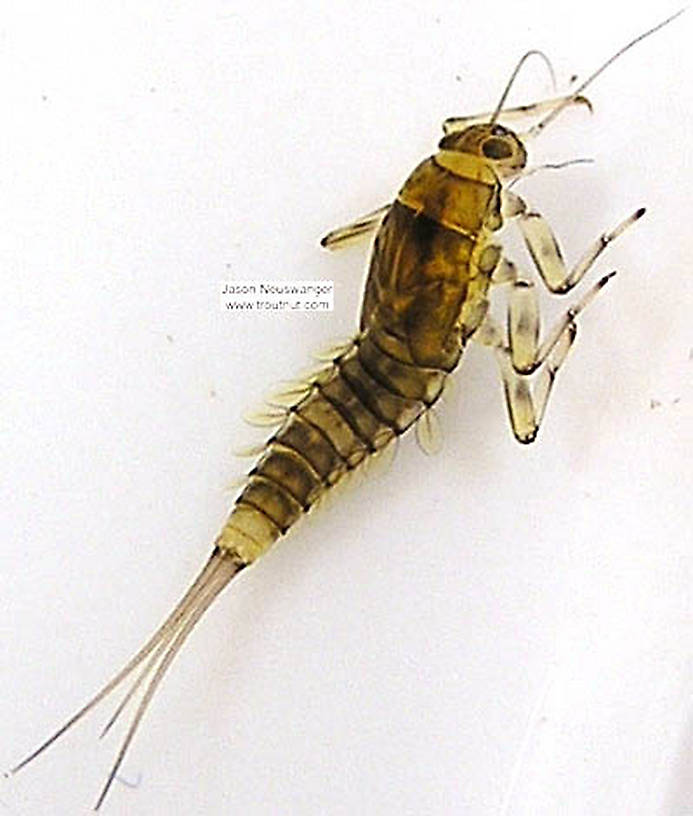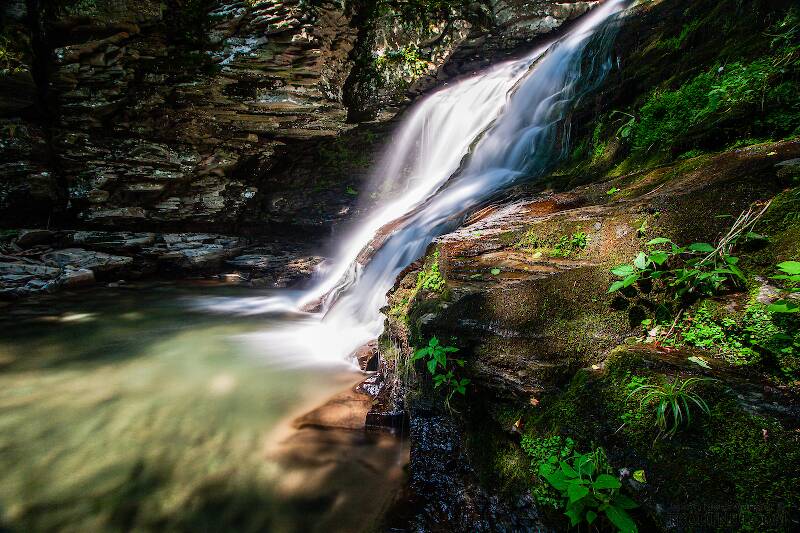
Hex Mayflies
Hexagenia limbata
The famous nocturnal Hex hatch of the Midwest (and a few other lucky locations) stirs to the surface mythically large brown trout that only touch streamers for the rest of the year.
Featured on the forum

This specimen keys pretty easily to Onocosmoecus, and it closely resembles a specimen from Alaska which caddis expert Dave Ruiter recognized as this genus. As with that specimen, the only species in the genus documented in this area is Onocosmoecus unicolor, but Dave suggested for that specimen that there might be multiple not-yet-distinguished species under the unicolor umbrella and it would be best to stick with the genus-level ID. I'm doing the same for this one.

Troutnut is a project started in 2003 by salmonid ecologist Jason "Troutnut" Neuswanger to help anglers and
fly tyers unabashedly embrace the entomological side of the sport. Learn more about Troutnut or
support the project for an enhanced experience here.
This is a small tributary of the East Fork of the Iron River in Bayfield County, Wisconsin. I visited it once and collected some bugs at road below a (former?) fish hatchery, but it looked too small to fish comfortably and I didn't try to catch anything.
Closeup insects by Troutnut from Schacte Creek in Wisconsin

This Baetis nymph is quite a bit larger than any of the others I found in winter 2004. Abdomen segment 5 is only slightly pale while 9 and 10 are quite pale. The tail is banded at the tip. Its body measures about 9mm long. It's much larger than the other Baetis specimens I collected, and it has quite well-developed wingpads.
It's most likely a mature nymph from a very early-hatching brood. It comes from the headwaters of a very small, very spring-fed Lake Superior tributary, which wasn't at all frozen despite very frigid temperatures and 3 feet of snow on the ground.
It's most likely a mature nymph from a very early-hatching brood. It comes from the headwaters of a very small, very spring-fed Lake Superior tributary, which wasn't at all frozen despite very frigid temperatures and 3 feet of snow on the ground.

